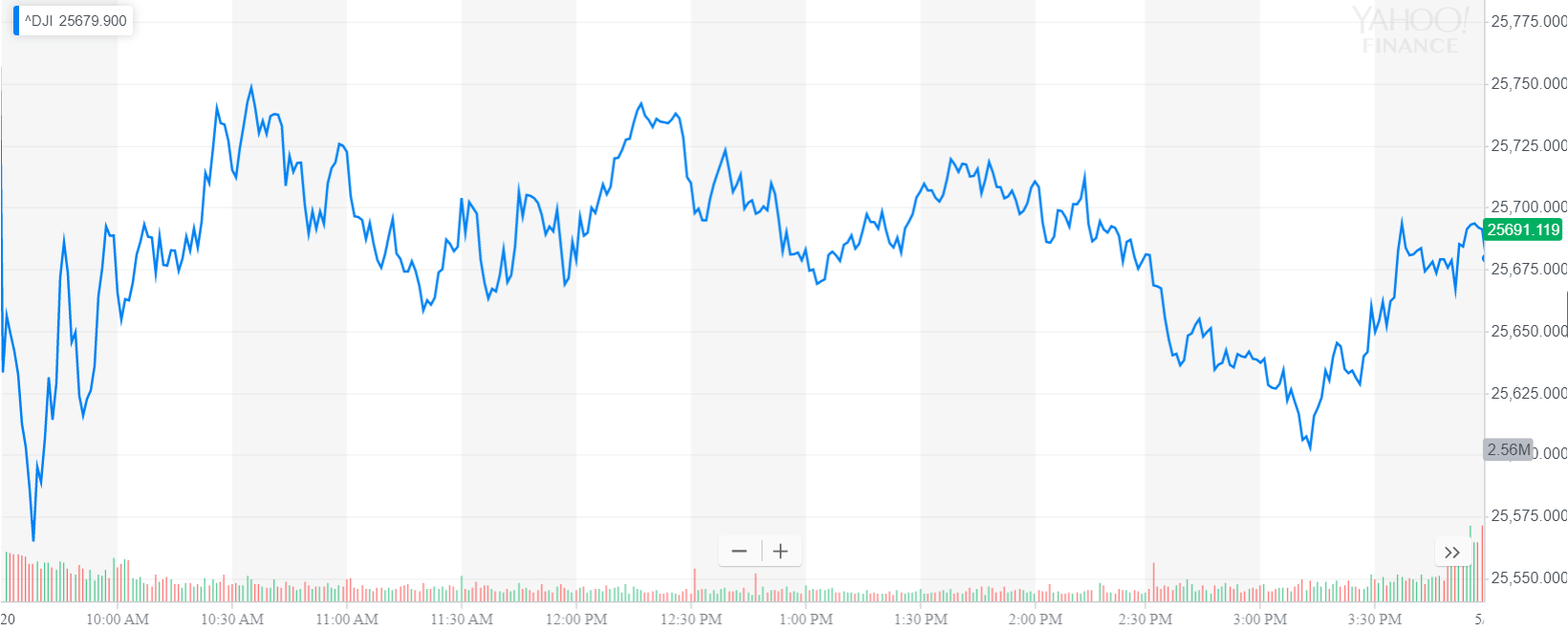Dow Flinches After Chicago Fed Index Flashes Dangerous Recession Signal

The Fed's dovish pivot catalyzed a major stock market recovery, but this Dow/S&P 500 rally hides a devastating truth that could punish investors. | Source: REUTERS/Brendan McDermid
By CCN.com: The Dow and broader U.S. stock market tumbled on Monday, as the combination of poor economic data, geopolitical tensions and a trade-war standoff with China kept investors out of riskier assets.
Dow Struggles to Gain Footing; S&P 500, Nasdaq Falter
All of Wall Street’s major indexes declined, mirroring a volatile pre-market session for Dow futures. The Dow Jones Industrial Average fell 84.10 points, or 0.3%, to 25,679.90.

The broad S&P 500 Index of large-cap stocks plunged 0.6% to 2,840.23. Seven of 11 primary sectors retreated, with information technology shouldering the heaviest losses. Four sectors booked losses greater than 1%.
Plunging tech shares weighed heavily on the Nasdaq Composite Index. The technology-focused benchmark fell 1.5% to close at 7,702.38.
What Economic Miracle?

President Trump’s “economic miracle” may not be all it’s cracked up to be, according to a closely-watched gauge of the U.S. economy.
The Chicago Federal Reserve’s National Activity Index plunged to -0.45 in April from +0.05 in March on a scale where zero represents historical trend growth. That was the weakest reading since May 2016, roughly eight months before President Trump took office.
Using the less volatile three-month average, the National Activity Index fell to -0.32 in April from -0.24 in March.
The monthly report tracks economic conditions across the U.S. economy using 85 indicators. During the month of April, 52 indicators declined compared with 33 that made positive contributions.
U.S. gross domestic product (GDP) expanded at a much faster than expected 3.2% annual pace the first quarter. But beneath the surface, the U.S. economic recovery faces a multitude of risks, including a prolonged trade war with China, a shaky real estate market, and soft manufacturing activity.
Last week, U.S. government data showed unexpected declines in retail sales and industrial production for the month of April, offering tangible signs that momentum was slowing.
Retail sales are used to gauge consumer spending habits, a component of the market that accounts for more than two-thirds of GDP.
Click here for a real-time Dow Jones Industrial Average price chart.